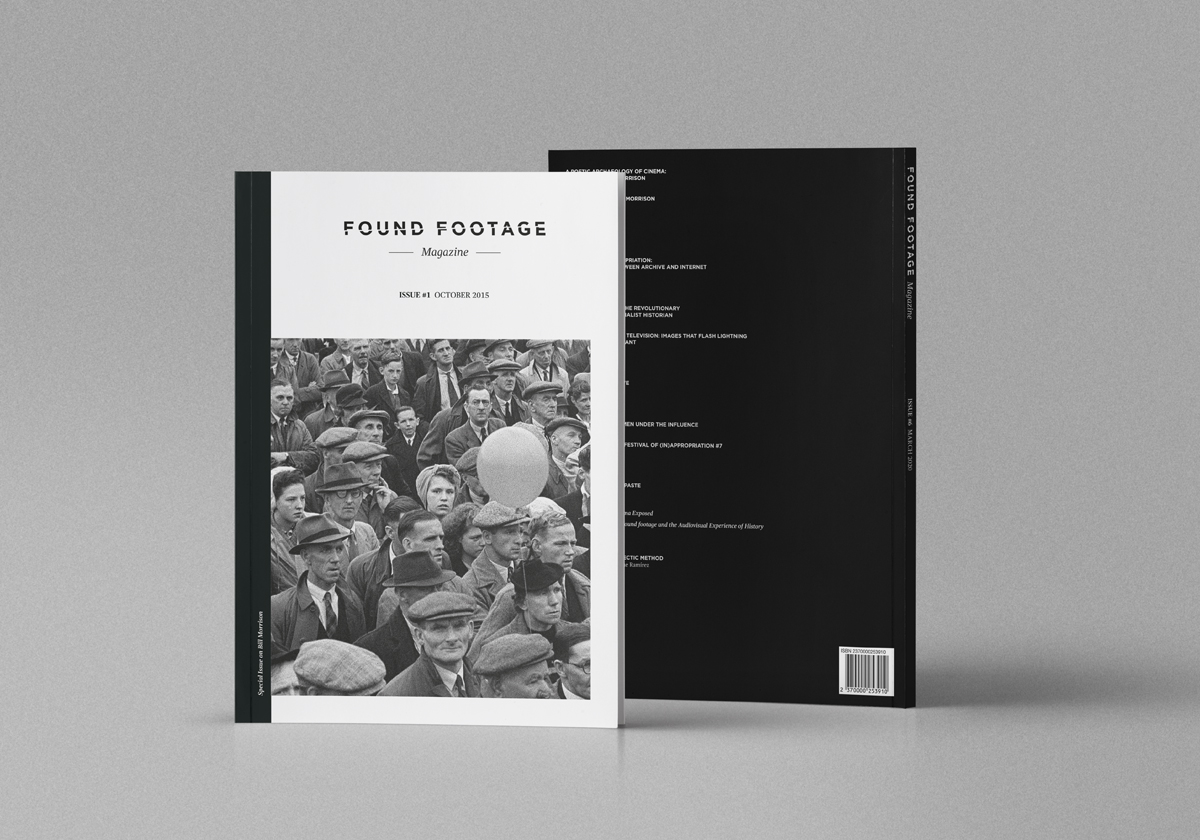Issue #1

Special on Bill Morrison
+ Other contents
- October 2015
- ISSN: 2462-2885
- Full-color magazine
- English & Spanish
A Poetic Archaeology of Cinema: The Films of Bill Morrison, by Matthew Levine
Bill Morrison‘s films often combine archival film material with contemporary pieces of music from internationally recognized composers. His masterpiece Decasia (67 min, 2002), a collaboration with the composer Michael Gordon, was selected for the 2013 National Film Registry of the Library of Congress of the US, becoming the most modern film named to be part of the list that preserves works of “great cultural, historic or aesthetic significance to the nation’s cinematic heritage.”
Interview with Bill Morrison, by FFM
Essays
- Facing Time, by Adrian Danks
Bill Morrison’s work is celebrated for the ways in which it provides a palpable sense of the mortality and archaeology of the moving image. But from within this material and ephemeral realm, emerge particular points of fascination. This essay explores the returning figure of the human face in Morrison’s cinema and examines what it can tell us about the truly human dimension and weight of the director’s found footage work. It focuses in particular on moments in films such as Decasia (2002), The Miners’ Hymns (2011) and Who by Water (2007) that show us faces peering back at us across time and through the beautiful decay of filmic emulsion.
- Knights Moves, by Dirk de Bruyn
This essay examines how the found footage films of Martin Arnold (Alone: Life Wastes Andy Hardy, 1998) and Peter Tscherkassky (Outer Space, 1999 and Dream Work, 2002) can be read as a belated response to Peter Wollen’s 1970s splitting of the avant-garde. Wollen’s tactical move, his article The Two Avant-gardes (Wollen, 1975 and revised in 1982) marked a historic moment when both critics and artists gained easy access to the film editing-machine for both film analysis and reflexive film production respectively. Wollen’s text asserted differences between a political and formalist avant-garde, opening up a space between structuralist/materialist film and feminist film theory and its counter-cinema. This move enabled Laura Mulvey and other Cine-Feminists to eschew formalism in favor of a political feminist counter–cinema and further, as part of its move into the academy, to develop and enlist Textual Analysis as a tool for uncovering the patriarchal ideologies at the heart of Hollywood melodrama.
- The Ethics of Appropriation: Found Footage between Archive and Internet, by Thomas Elsaesser
Appropriation is a varied concept, and it can carry very different meanings. For instance, applied to the engagement of the film-viewer, appropriation can be a more vivid term for spectatorship and reception studies, especially if we think of the active and interactive role we now tend to assign to the spectator—as viewer, as user, as player—given the different screen activities that are involved in the consumption and apperception of moving images.
- Santiago Álvarez: The Revolutionary Filmmaker as Materialist Historian, by Jonathan Palomar
I reflect on the work of Santiago Álvarez, the famous Cuban documentary filmmaker, and his approach to the usage of archival images, reading Alvarez’s revolutionary cinema vis-à-vis Walter Benjamin’s materialism. This short essay is a crossroad between the reflection on archival images as a source of history, materialistic approaches to film, and ideological critique. Alvarez’s mastery and experimental development of montage, and his total assumed revolutionary position, makes him an exceptional case of study in formal terms, and as a point of departure for a further theoretical reflection on the alleged crisis of ideology that surfaced after the dissolution of the U.R.S.S.
- Found footage and television: Images that flash lightning in a hazardous instant, by Ingrid Guardiola
Television discourse tends to be governed by categorical imperatives of the present: by the image as merchandise and monetized archive. Within this context we can find a vast number of TV makers whose work has focused on breaking these precepts from the found footage practices and establishing complex stories that let us reread history through dialectic of its images, dismantlement of the image-merchandise and exposure of the archive to a public dimension. For Walter Benjamin the dialectical image was a lightning flash. This essay will aim to analyze these moments of flashing exceptionality within the medium of television.
ARTICLES & INTERVIEWS
- Artists in an Archive, by Alan Berliner
- Making a Name, by Mike Hoolboom
- Sonic Findings: Festival (In)appropriation #7, by Jaimie Baron
- Women Under the Influence: The Claustrum by Jay Rosenblatt, by César Ustarroz
Film reviews: Cut ´n´ paste, by Albert Alcoz & Matthew Levine
- Iterations, by Gregg Biermann, 2014
- A Movie by Jen Proctor, by Jennifer Proctor, 2010/12
- Las variaciones Schwitters, by Alberto Cabrera Bernal, 2012
- Let Me ASMR You, by Clint Enns, 2014
- Iowneom Streets, by Lucía Moreno, 2014
- Pure Virtual Function, by Péter Lichter, 2015
- Weresheglanspertheere, by Sebastian Buerkner, 2014
- Pen Up the Pigs, by Kelly Gallagher, 2014
- Konrad & Kurfurst, by Esther Urlus, 2013/14
- Full of Fire, by Rhayne Vermette, 2013
- Threnody for the Victims of Marikana, by Aryan Kaganof, 2014
- Psychic Driving, by William E. Jones, 2014
Book Reviews
· Found Footage: Cinema Exposed, by César Ustarroz
· The Archive Effect: Found footage and the Audiovisual Experience of History, by César Ustarroz
Interview with Eclectic Method, by Óscar Testón & Enrique Ramírez (www.vjspain.com)
Artworks
by Albert Alcoz & Blanca Viñas, Dirk De Bruyn, Esther Urlus, Jennifer Reeves, Rhayne Vermette, Alberto Cabrera Bernal, Steven Woloshen, Péter Richter, Gustav Deutsch.